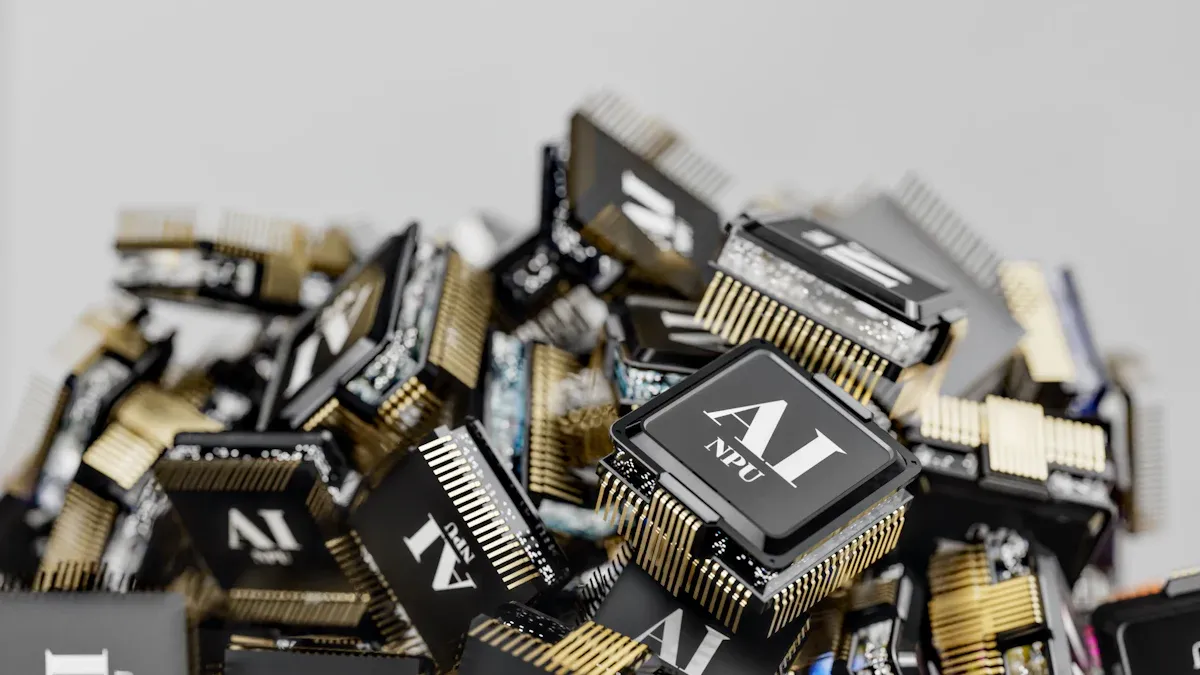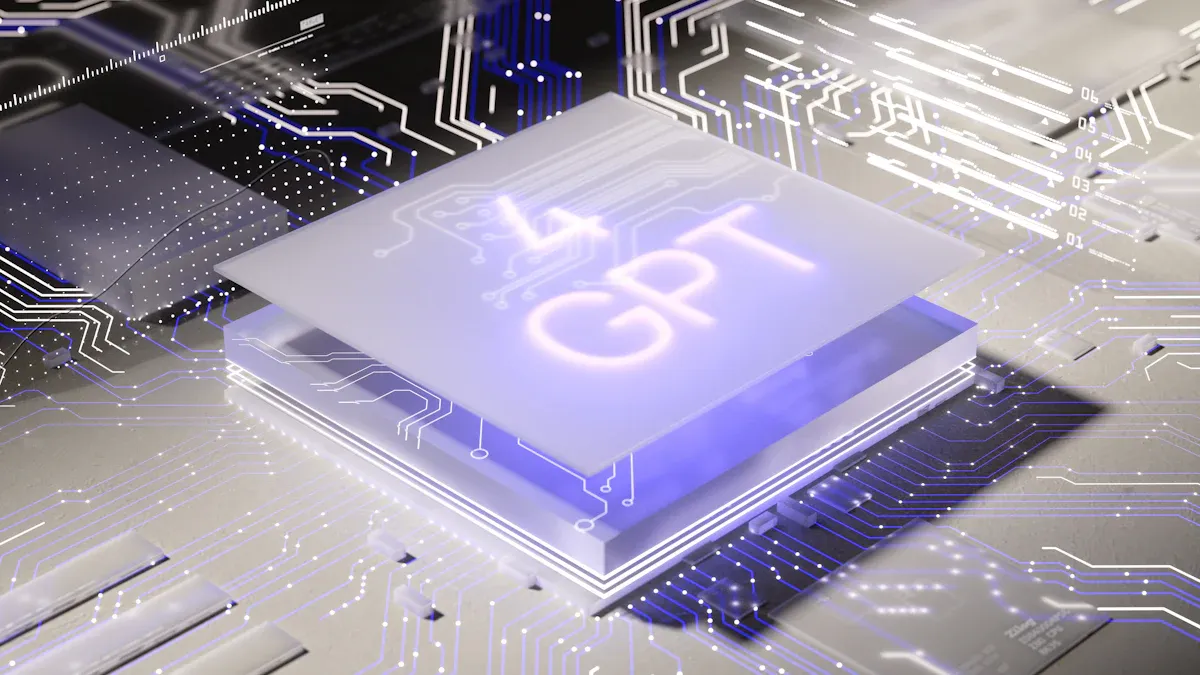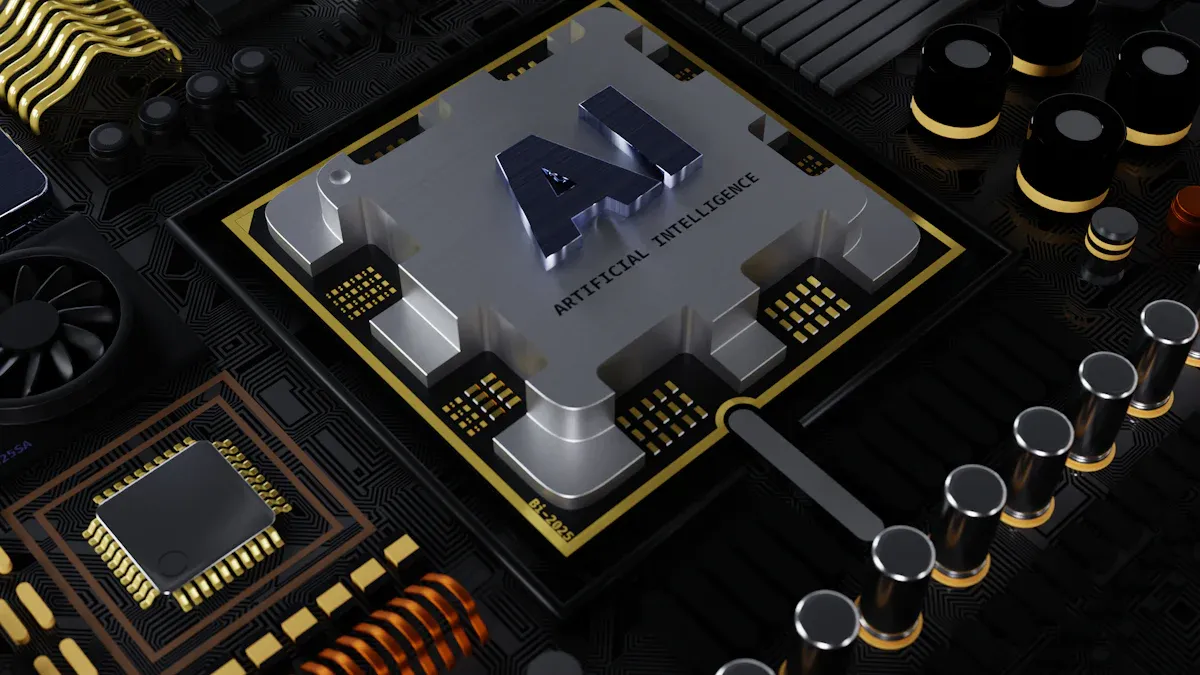
Low-latency PCBA for AI applications is crucial for the performance of AI systems. AI requires fast and accurate data processing for tasks such as self-driving cars and medical tests. Without quick insights, these systems struggle to function effectively. Low-latency PCBA for AI applications aids in transmitting signals rapidly and minimizing delays. This enables AI devices to respond swiftly and make improved decisions. Its significance grows as more industries adopt AI for innovative solutions and success.
Key Takeaways
Low-latency PCBA helps AI systems work faster and smarter.
Cutting signal delays makes AI better in healthcare, cars, and money.
Spending on low-latency PCBA makes systems handle big tasks easily.
Better materials and designs in PCBA can make AI quicker.
Using low-latency tools helps businesses stay ahead with faster services.
Understanding Low-Latency PCBA for AI Applications
What Is Low-Latency PCBA?
Low-latency PCBA means circuit boards made to reduce signal delays. These boards help electronic parts talk to each other quickly. In AI, speed and accuracy are super important. Low-latency PCBA helps AI systems process data faster and make decisions quicker.
Think of it like the backbone of AI machines. It makes sure signals move fast between processors, memory, and other parts. This quick communication is key for tasks like real-time analysis. AI systems need to study data and decide instantly. Without low-latency PCBA, AI devices would struggle to keep up with modern needs.
Importance of Low-Latency PCBA in AI Hardware
AI hardware depends on low-latency PCBA to work well. When you use AI, you want it to be fast and correct. For example, in smart cars or cameras, even small delays can cause mistakes. Low-latency PCBA reduces these delays, helping devices run smoothly.
It also supports special AI parts like hardware accelerators. These accelerators speed up AI tasks, letting systems handle tough jobs quickly. By improving PCBA design and materials, makers create boards that fit AI’s unique needs.
How Low-Latency PCBA Supports AI Workloads
Low-latency PCBA is key for handling heavy AI tasks. AI often works with lots of data and hard calculations. To do this well, low-latency PCBA cuts delays and boosts speed.
AI systems need fast networks to process data quickly. For example, GPUs in AI need much more bandwidth than regular networks.
AI apps that use many servers need smooth communication. Low-latency PCBA helps servers work together without delays.
Slow networks can cause problems, making AI less efficient. Low-latency PCBA fixes these issues, allowing instant analysis and decisions.
By solving these problems, low-latency PCBA improves how AI systems perform. It lets you use edge AI tools that are faster and more accurate. This gives you an advantage in industries powered by AI.
Challenges Without Low-Latency Solutions in AI Applications
Problems in AI System Performance
Without low-latency solutions, AI systems slow down a lot. You might see delays in tasks needing quick actions. For example, self-driving cars need fast data to make choices. If latency isn’t reduced, these cars can’t work safely or well. Chatbots also need quick replies to keep users happy. Delays here can make chats slower and less helpful.
AI models also need fast access to big data. During training, they process huge datasets quickly. Without low-latency, training takes longer, delaying AI use. This slows down new ideas and progress in AI-powered industries.
Delays in Real-Time AI Tasks
Inference is when AI studies data and gives answers. If latency is high, real-time tasks get disrupted. For example, fraud detection must catch bad actions instantly. Delays here could miss stopping fraud. In healthcare, AI tools like medical imaging need fast results. Slow processing can hurt patient care.
Bad hardware or poor networks can cause these delays. Fixing latency helps AI handle real-time tasks better. Solving these problems makes AI tools faster and more reliable.
Effects on AI Accuracy and Speed
High latency doesn’t just slow things down; it hurts accuracy too. Real-time AI needs both speed and precision. When latency rises, keeping this balance gets harder. For instance, aiming for perfect accuracy can slow down AI tasks.
The table below shows how high latency affects AI:
Aspect | Effect of High Latency |
|---|---|
More money needed for super-accurate models | |
Diminishing Returns | Small accuracy gains need lots of resources |
Real-time Analytics | High accuracy slows down task speed |
Lowering latency avoids these problems. By improving systems, AI becomes faster and more accurate. This helps meet the needs of real-time tasks.
Benefits of Low-Latency PCBA for AI Applications

Real-Time Decision-Making with Low-Latency Edge Inference
Low-latency PCBA helps AI systems make quick decisions. It lets them process data fast and respond instantly. This is important for tasks like healthcare, cars, and stopping fraud. For example, in healthcare, diagnostic tools work 40% faster. This can lower the risk of serious brain damage. Self-driving cars use low-latency PCBA to decide in under 20 milliseconds. This improves sensor accuracy to 99.7% and avoids 85% of crashes. In finance, it analyzes over 50,000 transactions each second. Fraud detection accuracy rises to 97.3%, and false alarms drop by 45%.
Industry | Key Impact / Performance Metrics |
|---|---|
Healthcare | – 40% faster diagnostic results |
- Lower chance of permanent brain damage
- Better accuracy for medical images |
| Autonomous Vehicles| – Decisions made in less than 20ms
– Sensor accuracy: 99.7%
– Crash prevention rate: 85% |
| Financial Services | – Examines 50,000+ transactions per second
– Fraud detection accuracy: 97.3%
– False alarms reduced by 45% |
Low-latency PCBA ensures AI systems are fast and reliable.
Enhanced Efficiency in Data-Intensive AI Tasks
Low-latency PCBA makes handling big data easier for AI. It speeds up how parts share and process information. AI needs fast communication to manage large datasets. Low-latency tools like in-network computing stop data loss and improve scaling. For example, PCIe 7.0 doubles speed to 512 GB/s for real-time tasks. A 2-tier Spine-Leaf Architecture boosts East-West data sharing, making networks more efficient.
Efficiency Metric | Description |
|---|---|
In-network computing | Uses current devices for faster scaling. |
2-tier Spine-Leaf Architecture | Improves East-West data sharing for better speed. |
Lossless AI fabric | Stops data loss with smart bandwidth control. |
PCIe 7.0 | Doubles speed to 512 GB/s for quicker processing. |
These upgrades help AI systems work faster and handle tough jobs.
Competitive Edge in AI-Driven Industries
Using low-latency PCBA gives businesses an advantage. It ensures stable performance and fast responses for AI tasks. This helps companies create better solutions and stay ahead. For example, firms with low-latency tools offer quicker and more accurate services. Whether in healthcare, cars, or finance, these systems help businesses lead in AI-powered markets.
Tip: Investing in low-latency PCBA boosts system speed and positions your business as an AI leader.
Strategies and Technologies for Low-Latency PCBA
Advanced Materials and High-Speed Components
To make low-latency PCBA, special materials are needed. These materials help signals move faster and reduce delays. For example, PTFE (Polytetrafluoroethylene) allows signals to travel quickly. Copper with low resistance stops energy loss, making signals more efficient.
Fast parts like DDR5 memory and PCIe 7.0 are also important. They process data very quickly, helping with real-time tasks. By using these materials and parts together, you can build PCBA that works well for AI.
Tip: Pick materials and parts made for high-speed tasks to lower latency.
Optimized PCB Design for Low Latency Inference
How a PCB is designed affects its speed. A good design helps signals move fast without problems. To do this, keep trace lengths short and avoid sharp bends. Shorter traces mean quicker signal travel, which is key for real-time work.
Using multiple layers in PCBs also helps. Multi-layer boards with HDI improve signal flow and stop interference. This makes AI systems faster and more reliable. Impedance-controlled traces also keep signals steady, cutting delays even more.
Note: A well-designed PCB improves both speed and reliability for AI systems.
Integration of AI-Specific Hardware Accelerators
AI hardware accelerators are key for fast performance. Examples include FPGAs, ASICs, GPUs, and NPUs. FPGAs and ASICs are great for low-latency tasks. FPGAs can be adjusted for specific jobs, while ASICs are built for speed.
GPUs and NPUs also help reduce latency. GPUs handle big data and complex tasks quickly. NPUs are made for deep learning, offering better speed and efficiency. Adding these accelerators to PCBA improves AI performance and real-time decisions.
Key Insight: Choose the right accelerator based on your AI needs. Think carefully before deciding.
Using Multi-Layer and High-Density Interconnect PCBs
Multi-layer and HDI PCBs help make AI systems faster. They improve how signals move and reduce interference. This is important for AI tasks that need quick responses.
Multi-layer PCBs have stacked layers of conductive material. These layers make designs smaller and signals travel shorter distances. Shorter travel means less delay. HDI PCBs use tiny holes (microvias) and small parts to speed up signal flow. This helps edge AI devices process data instantly.
To lower latency, certain design methods are needed. High-speed routing keeps signals moving smoothly. Matching signal lengths avoids timing errors. Reducing via transitions stops signal loss. Keeping trace widths even improves signal quality. Better via designs, like back-drilled vias, reduce signal problems like crosstalk.
Technique | What It Does |
|---|---|
Makes signals move faster and reduces delays. | |
Minimizing Parasitic Capacitance | Stops unwanted effects for better signal quality. |
Via Optimization | Fixes signal issues like reflections and crosstalk. |
These methods are great for edge AI systems. For example, in self-driving cars, these PCBs help sensors talk to processors quickly. This improves navigation and prevents crashes. In healthcare, portable tools use these PCBs for fast data analysis. This helps doctors treat patients better.
Using multi-layer and HDI PCBs makes AI systems quicker and more reliable. They also meet the need for smaller and smarter hardware in AI industries.
Tip: Focus on designs that improve signal flow and cut delays. This helps your AI systems work better in real-time tasks.
Future Trends in Low-Latency PCBA for AI Applications

Smarter PCBA Manufacturing with AI
The future of making PCBA is smarter with AI. Factories now use AI to improve how they work. AI helps set better production rules, find mistakes early, and plan repairs. These changes save time, cut costs, and reduce errors. For example, PCBs for AI now send signals faster and use less energy. These updates handle tough AI tasks and keep delays low.
AI also makes quality checks better. It spots problems during production to ensure every board works well. This makes devices more reliable for real-time tasks. As AI grows, PCBA production will become even faster and more accurate.
5G’s Role in Faster AI Decisions
5G technology helps AI make quicker decisions. Its fast connections bring AI systems closer to where data is made. This reduces delays and improves real-time actions. For example, 5G edge computing places AI tasks near data sources. This setup meets the speed and bandwidth needs of AI.
New frameworks like ICC make 5G even better. They cut job delays by 60% and lower costs by 27%. With 5G, AI becomes faster and more dependable. This is great for things like self-driving cars and smart cities.
Feature | 5G MEC | ICC Framework |
|---|---|---|
Delay Handling | Separate systems | Combined communication and computing |
Service Capacity Growth | Not available | 98% more service capacity |
Job Delay Reduction | Not available | 60% less delay |
Cost Savings | Not available | 27% lower compute costs |
AI Chips and On-Chip Storage
Special AI chips and on-chip storage make AI faster. These parts fix problems with speed, memory, and data sharing. Advanced chips balance power to work better in real tasks. On-chip storage cuts waiting time by giving quick access to data.
Memory upgrades also help with big AI jobs. They stop delays and make tasks smoother. Data-sharing parts, called interconnects, are now faster and more efficient. These changes let AI handle hard jobs quickly and accurately.
Part | What It Does |
|---|---|
Processing Power | Balances power for better real-world performance. |
Memory | Fixes delays in big AI tasks for smoother work. |
Interconnect | Speeds up data sharing for better performance. |
Using these tools makes AI systems faster and better for real-time tasks. These updates are key for creating smarter and quicker AI solutions.
Low-latency PCBA is key to making AI work better. It helps AI act quickly and think efficiently for tasks like stopping fraud or guiding self-driving cars. Using smart methods can fix delay problems and make AI more accurate. To stay ahead in AI industries, focus on low-latency tools. These tools allow faster thinking, meeting the needs of real-time AI. Putting money into these systems keeps your AI fast and dependable.
FAQ
What is the main purpose of low-latency PCBA in AI systems?
Low-latency PCBA helps parts in AI systems talk quickly. It cuts delays so data can be processed fast. This is crucial for tasks like self-driving cars, spotting fraud, and medical tests.
How does low-latency PCBA improve AI performance?
It reduces signal delays, helping AI handle big data faster. This makes AI tasks quicker and more accurate, especially for real-time jobs like edge computing and predictions.
Can low-latency PCBA reduce costs in AI operations?
Yes, it can. By working faster and cutting delays, it saves money. Quick processing uses fewer resources, lowering costs over time.
What industries benefit the most from low-latency PCBA?
Healthcare, cars, and finance depend on low-latency PCBA. It helps make quick decisions, improves safety, and boosts efficiency in these areas.
Are there specific materials used in low-latency PCBA?
Yes, special materials like PTFE and low-resistance copper are used. These materials help signals move faster and save energy, making them great for AI tasks.
Tip: Pick PCBA materials made for fast tasks to get better results.
See Also
Why PCBA Manufacturing Skills Are Crucial for Electronics Design
Enhancing Accuracy Through Automation in PCBA Testing Procedures
Defining PCBA and Its Essential Roles in Electronics
Best Practices for Achieving Quality and Efficiency in PCBA Production